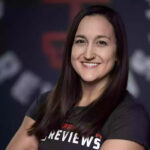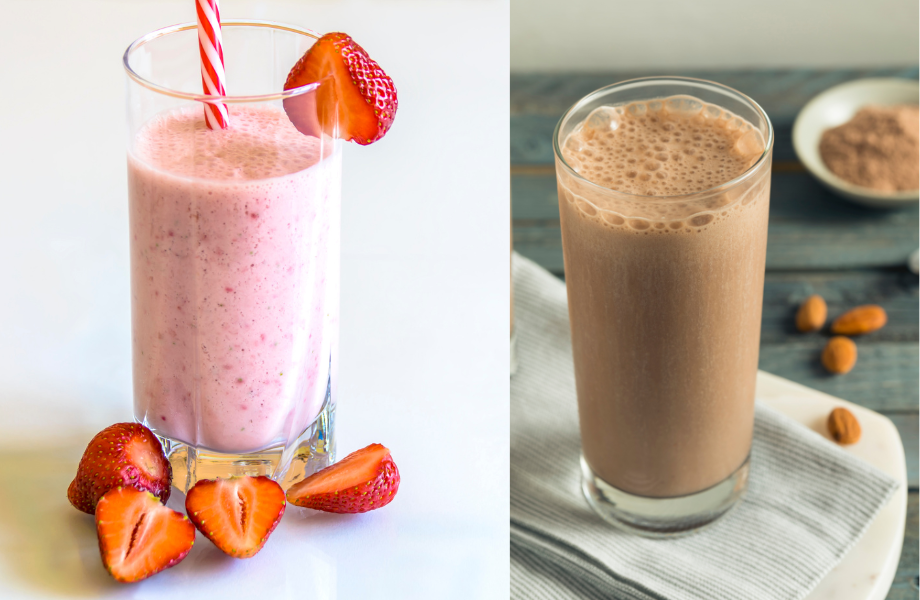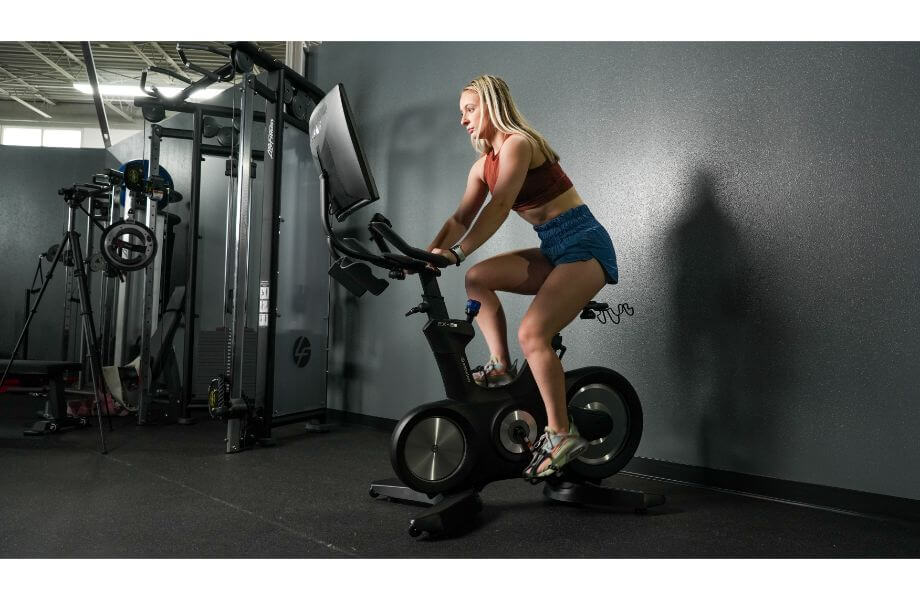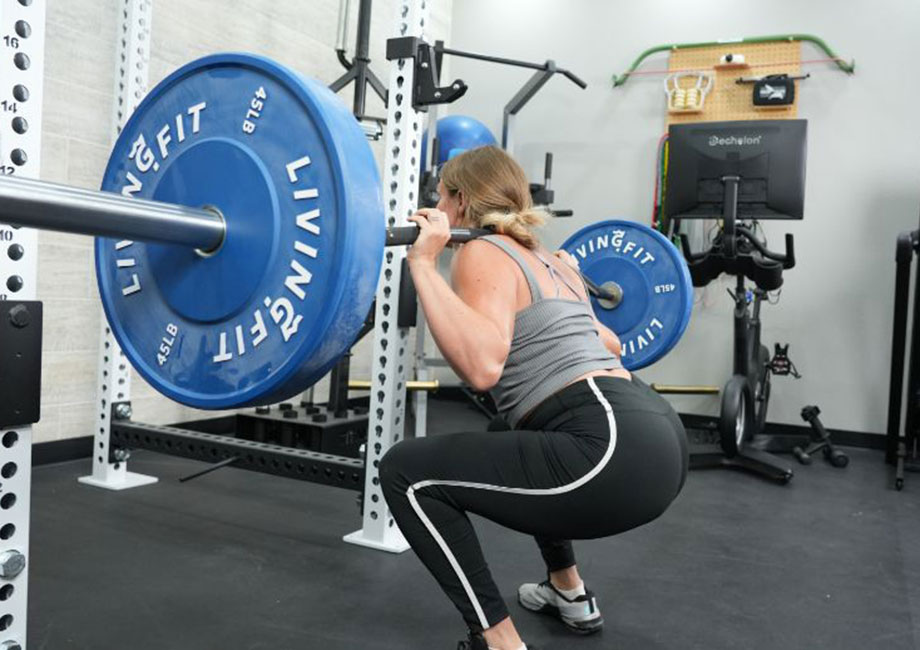Your hips don’t lie.
You may have tight hip flexors if you regularly experience tightness, weakness, or pain in your hip area, you may have tight hip flexors. Tight hip flexors are pretty common and characterized by hip pain, lower back pain, a reduced range of motion, and other symptoms that negatively impact your everyday life. And it can affect both active and more sedentary individuals.
RELATED: Hip Flexor Exercises
Fortunately, the exercise experts at Garage Gym Reviews have just what you need to take those flexors from tight to alright! Kate Meier, NASM-CPT, USAW-L1, CF-L1, and GGR editorial team member, describes the best hip flexor stretches you can do whenever, wherever!
Get comfortable and check them out!
8 Best Hip Flexor Stretches
- Half-kneeling hip flexor stretch
- 90-90 stretch
- Side-lying hip flexor stretch
- Standing quad stretch
- Butterfly stretch
- Lying figure-four stretch
- Deep lunge stretch
- Hip flexor foam roll
Half-Kneeling Hip Flexor Stretch
Benefits: The half-kneeling hip flexor stretch directly targets the hip flexor muscles, most notably the iliopsoas of your back leg, while simultaneously targeting the glutes of your front leg, making it an overall excellent lower-body stretch to include after any Leg Day workout.
How to do it:
- Stand with your chest tall, back straight, and feet shoulder-width apart.
- Step forward with your left foot, shift your weight forward, and bend both knees.
- Continue until your front knee forms a 90-degree angle and your right knee lightly touches the mat. (Alternatively, you can begin this stretch with one knee already lowered onto the mat.)
- Hold the position for 15 to 30 seconds, then release and return to the starting position.
- Repeat the stretch on your other side.
RELATED: Best Stretches For Leg Day
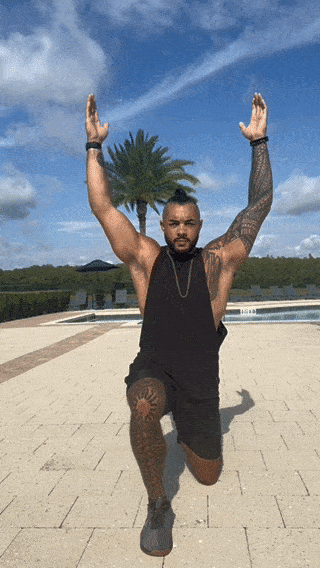
90-90 Stretch
Benefits: The 90-90 stretch is great for targeting the psoas, a crucial hip flexor muscle, but it also hits your hip abductors, hip adductors, glutes, and piriformis. It also helps build the strength and flexibility you’ll need for advanced yoga poses, including pigeon pose, lizard pose, and cow face pose, to name a few.
How to do it:
- Sit on the floor with your knees loosely bent.
- Shift your weight to the right, bending your right knee 90 degrees as you lay your outer right thigh flat on the floor. Simultaneously extend your left leg and bend your left knee.
- Lean your upper body forward until you feel a gentle stretch.
- Hold for 15 to 30 seconds, then release and move in the opposite direction to repeat the stretch for your other side.
RELATED: Adduction vs Abduction
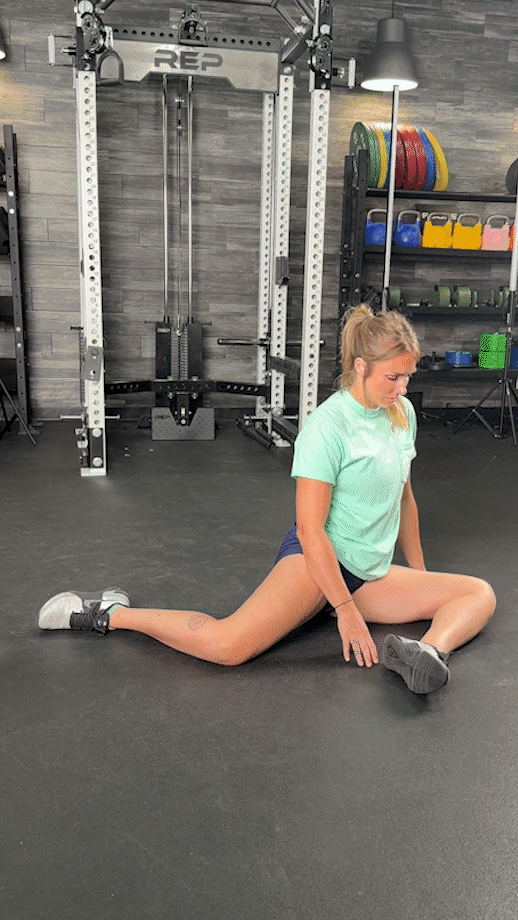
Side-Lying Hip Flexor Stretch
Benefits: Whoever said you can’t get work done if you’re lying down on the job wasn’t aware of the side-lying hip flexor stretch. The lying position provides unrivaled stability that lets you get a deeper stretch without becoming a balance exercise, meaning it’s one of the most effective and accessible hip flexor stretches available.
How to do it:
- Lie on your right side with your legs slightly in front of your body.
- Bring your left foot back until you can grab your ankle or the top of your foot with your left hand.
- Lightly pull your left foot up until you feel a stretch in your left hip and quads.
- Hold for 15 to 30 seconds, then release.
- Repeat the stretch on your other side.
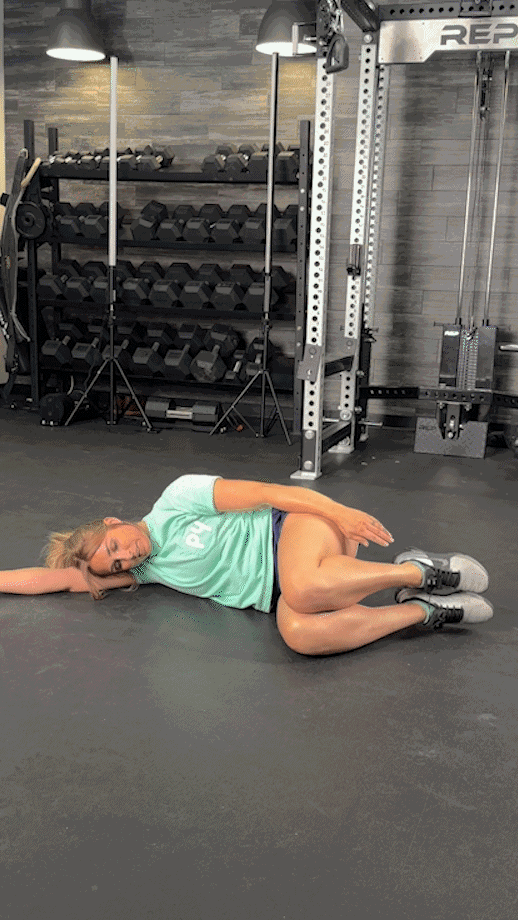
Standing Quad Stretch
Benefits: Your quads primarily work to extend your knees, but as one of the largest groups of muscles in your lower body, they also assist with hip flexion. So, you’ll enjoy improved knee and hip joint mobility, among many other benefits of including the standing quad stretch in your post-workout stretching routine.
How to do it:
- Stand with your chest tall, back straight, and feet shoulder-width apart.
- Lift your right foot behind you and grab it with your right hand.
- Pull your foot as close to your glutes as you can comfortably manage, keeping your left leg straight.
- Hold for 15 to 30 seconds, then release.
- Repeat the stretch with your left foot.
RELATED: 10 Best Quad Stretches
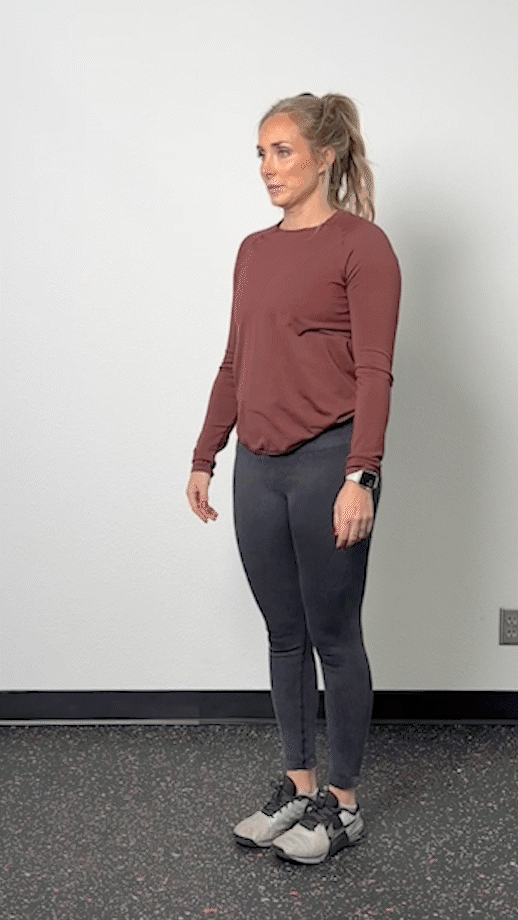
Butterfly Stretch
Benefits: The butterfly stretch may be one of the most straightforward hip stretches. But that doesn’t make it any less effective at opening the hips and loosening your hip flexors, adductors, and pelvic muscles.
How to do it:
- Sit on the floor, bend your knees outward, and place the bottoms of your feet together.
- Lightly press your knees down toward the floor with your hands or elbows until you feel a gentle stretch.
- Hold for 15 to 30 seconds, then release.
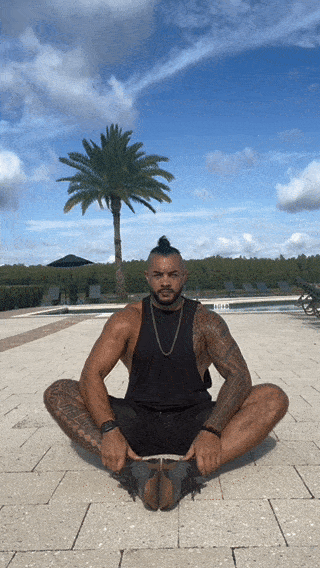
Lying Figure-Four Stretch
Benefits: The lying figure-four stretch, on the other hand, will make you feel like a contortionist as you lift your legs, twist, and get into the signature pretzel position to open up the hips and improve your hip mobility. It’s worth it, though, as the unique positioning gives you a really good stretch in your hip flexors and piriformis, an underutilized glute muscle that facilitates hip rotation.
How to do it:
- Lie face up with your knees bent and your feet flat on the floor.
- Raise your right leg and set your right ankle just above your left knee.
- Extend both arms forward, reaching your right arm through your legs, and clasping your hands below your left knee.
- Pull your knee toward your chest until you feel a gentle stretch.
- Hold for 15 to 30 seconds, then release.
- Repeat the stretch on your opposite side.
RELATED: Best Glute Stretches
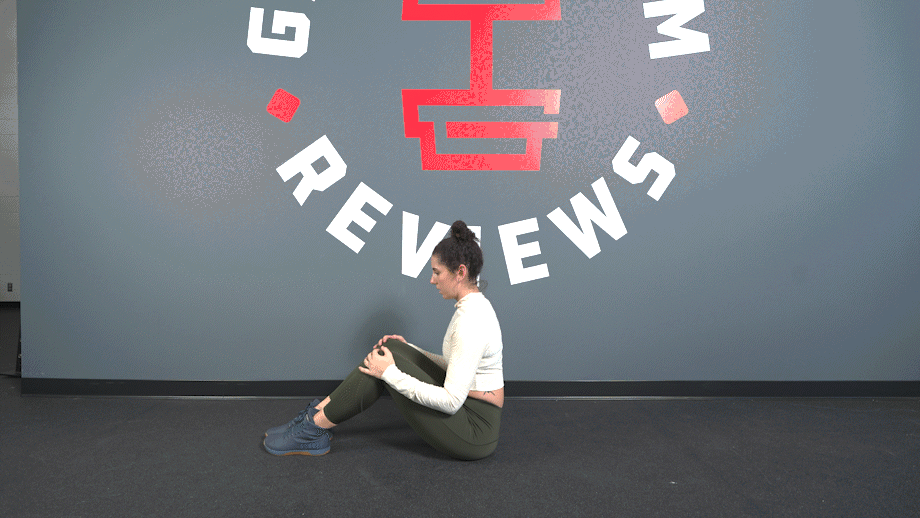
Deep Lunge Stretch
Benefits: Your hip flexors are in a constant state of compression when you spend long periods sitting down, which 29.3% of us do at work every day, according to the U.S. Bureau of Labor1. The deep lunge stretch combats this by stretching those tight hip flexors, but it hits a variety of other lower-body muscle groups like the quadriceps, glutes, hamstrings, and calves.
How to do it:
- Stand with your chest tall, back straight, and feet shoulder-width apart.
- Take a big step forward with your left foot, bending both knees as you move.
- Continue until your left knee is bent at a 90-degree angle.
- Hold for 15 to 30 seconds, then release and return to the starting position.
- Repeat the stretch, this time stepping with your right foot.
RELATED: Your Guide to Lunges Exercise
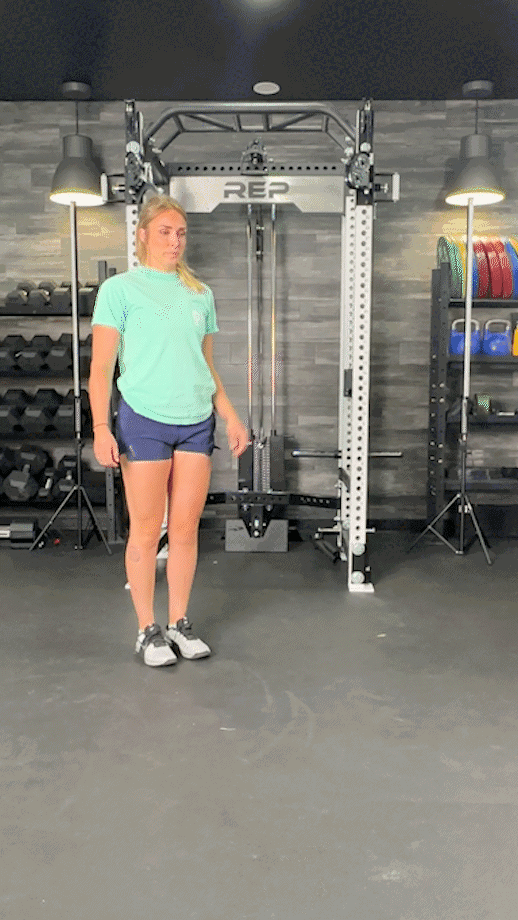
Hip Flexor Foam Roll
Benefits: According to the Journal of Sport Rehabilitation2, using a foam roller in combination with your static stretching regimen may help improve your hip flexion range of motion. It may not always feel pleasant, but the results are well worth it.
How to do it:
- Kneel on your mat with your foam roller in front of you.
- Lower yourself into a forearm plank, positioning the roller on the front of your hip flexor. You may bend your other leg as needed for comfort and stability.
- Slowly roll forward and backward, then side to side, focusing on the tender spots.
- Continue for 15 to 30 seconds, then rest.
- Repeat for your other side.
RELATED: Best Foam Roller Exercises
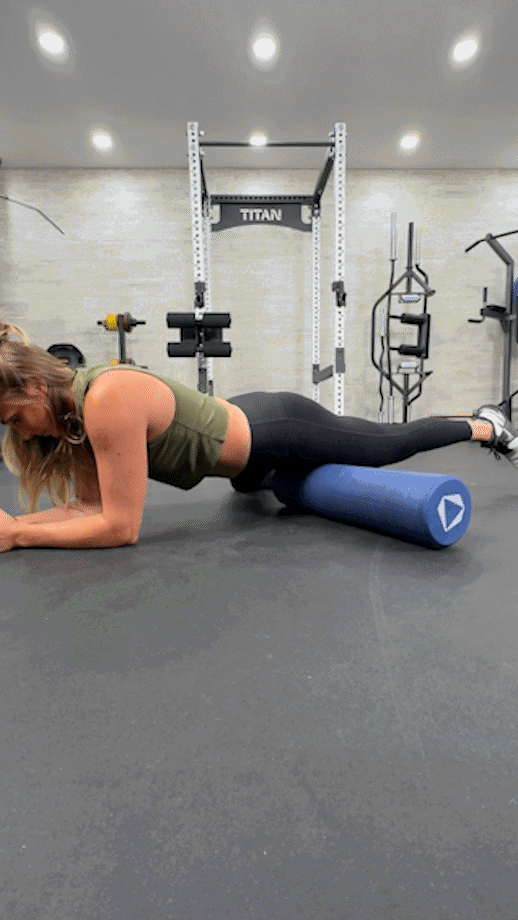
Sample Hip Flexor Stretch Workout
The following hip flexor stretches work well as a warm-up before getting into your big lifts—i.e., squats, lunges, and deadlifts—but they also serve as the perfect cooldown after running your lower body through the wringer.
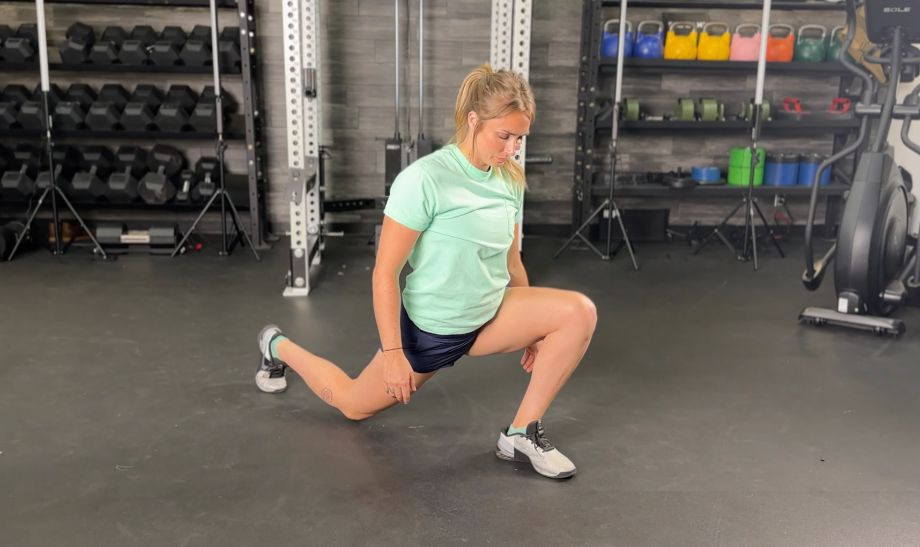
Here’s a sample stretching routine to loosen up your tight hip flexors.
| Stretch | Sets | Reps / Duration |
| Half-Kneeling Hip Flexor Stretch | 2-3 | 15-30 sec |
| Standing Quad Stretch | 2-3 | 15-30 sec |
| Deep Lunge Stretch | 2-3 | 15-30 sec |
| 90-90 Stretch | 2-3 | 15-30 sec |
| Butterfly Stretch | 2-3 | 15-30 sec |
| Side-LyingHip Flexor Stretch | 2-3 | 15-30 sec |
| Lying Figure Four Stretch | 2-3 | 15-30 sec |
| Hip Flexor Foam Roll | 2-3 | 15-30 sec |
Equipment needed: Exercise mat, foam roller
What Muscles Make Up Your Hip Flexors?
Plenty of gym-goers can identify the major lower-body muscle groups, like the quadriceps, glutes, and hamstrings, but what exactly are the hip flexors, and where are they located?
Basically, your hip flexors are a group of muscles that work to flex your hips. It’s important to keep these muscles loose because you otherwise wind up with tightness, weakness, and pain in your hips and/or lower back.
Your main hip flexor muscles include:
- Iliopsoas: The iliopsoas consists of two muscles, the psoas major and the iliacus, beginning at your lower back and inserting into the femur. It’s your primary hip flexor muscle.
- Rectus femoris: Your quads are known for their pivotal role in extending your knees, but the rectus femoris, one of the four quadriceps muscles, assists in hip flexion as well.
- Sartorius: Located on the front of your upper thigh, the sartorius muscle assists in many lower-body movements, including hip flexion, knee flexion, and knee rotation.
- Pectineus: The pectineus, located in the pelvis, facilitates hip flexion and adduction.
Benefits of Training Your Hip Flexors
It doesn’t matter if you’re an athlete searching for a way to up your game or just an everyday person looking to live a healthy and pain-free life, there are many benefits associated with regularly training and stretching your hip flexors.
May Help Improve Your Athletic Performance
So, we’ve established that your hip flexors, as the name suggests, flex your hips. That means that anytime you bring your knees closer to your chest, namely during exercises like the squat, lunge, or deadlift, you’re relying on your hip flexors to help complete the movement.
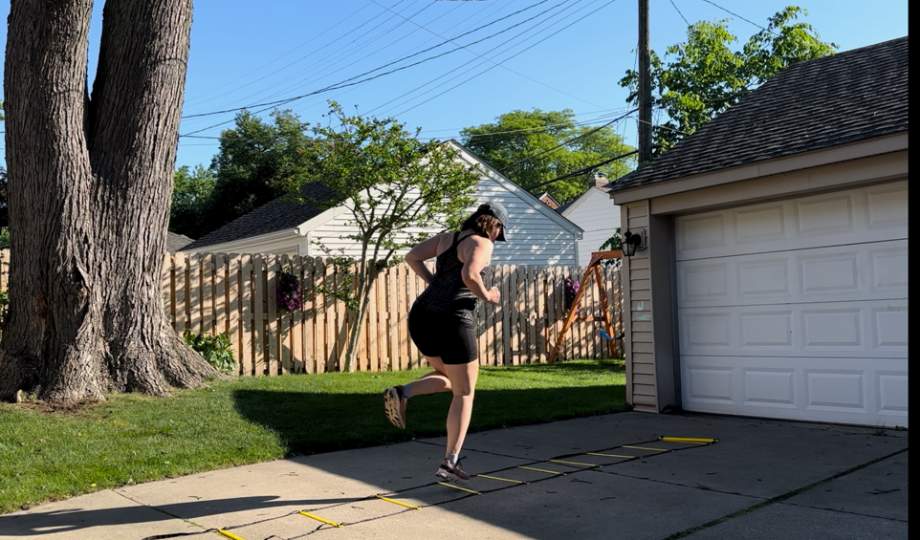
Training your hip flexors increases muscle strength, endurance, and flexibility, meaning you’ll likely see some improvements in various athletic activities. For example, a study in the Journal of Strength and Conditioning Research3 concluded that “an increase in hip flexion strength can help to improve sprint and agility performance.”
RELATED: Muscular Endurance Exercises
May Reduce Your Risk of Injury
A 2016 randomized controlled trial conducted by the European Society for Sports Traumatology, Knee Surgery and Arthroscopy4 found that a “6-week hip-flexor training programme…[may] substantially improve hip-flexor muscle strength” and may be crucial for the “prevention and treatment of acute and longstanding hip-flexor injuries.”
That said, you should confirm if your regular hip pain is a common case of hip flexor tightness or a possible injury before beginning a new training program. Consult your doctor or another qualified healthcare professional for actual medical advice before engaging in hip flexor training.
May Help Relieve Low Back Pain
A 2021 study in the Journal of Experimental Orthopaedics5 found that patients suffering from low back pain experienced a decrease in pain and disability and an increase in their hips’ range of motion following an eight-week intervention involving hip stretches.
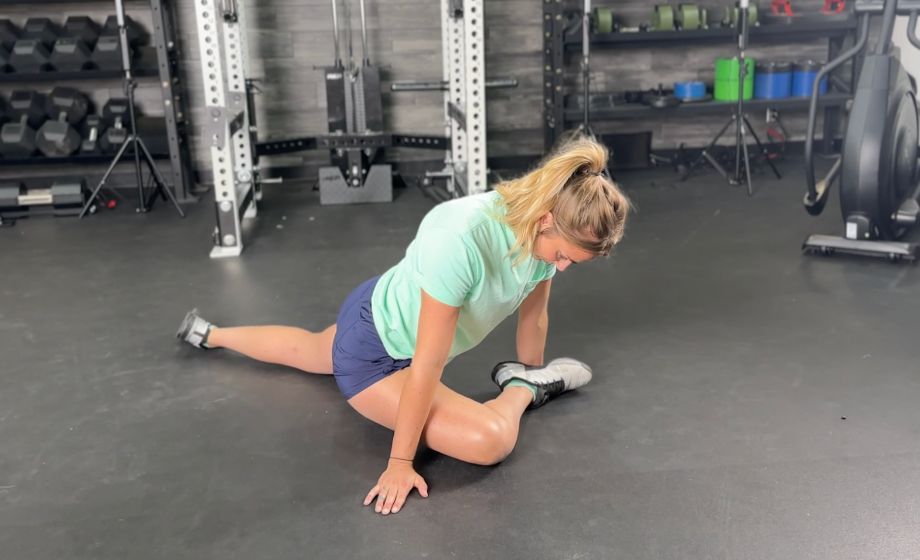
The study concluded that “[non-specific low back pain] might be partly related to hip flexor tightness,” suggesting that a static stretching program designed to reduce hip flexor tightness may provide relief from low back pain.
RELATED: 13 Posterior Chain Exercises
Hip Flexor Stretches: Final Thoughts
Hip, hip, hooray for hip flexor stretches! These simple stretches may unlock a wealth of benefits, including improved athletic performance, reduced risk of injury, pain relief, and more, making them a must to include on every Leg Day.
Shakira’s hips don’t lie, and neither do we. But don’t just take our word for it; work these hip flexor stretches into your next session and see what they can do for you!
Hip Flexor Stretches: FAQs
What are the symptoms of tight hip flexors?
It can be tricky to determine if you’re dealing with regular old hip flexor tightness or something more severe. Symptoms of tight hip flexors include pain, tightness, reduced mobility, muscle spasms, swelling, bruising, tenderness, and/or lower back pain.
RELATED: Best Mobility Exercises
If you really want to be sure you’re dealing with run-of-the-mill hip flexor tightness rather than something serious, visit your doctor or a qualified healthcare professional for a proper diagnosis. They’ll help determine the cause of your pain and put together a care plan that’s tailor-made for you.
What is the fastest way to relieve hip flexor pain?
It all depends on the reason you’re experiencing hip flexor pain, but assuming it’s from tight hip flexors, our hip flexor stretches will go a long way towards providing that much-needed relief.
For a personalized plan, consider working with a certified personal trainer, physical therapist, DPT, or other qualified health or fitness professional.
RELATED: Best Online Personal Trainer
What is the cause of tight hip flexors?
One of the trickiest things about hip flexor tightness is that you’re “damned if you do, damned if you don’t,” so to speak.
You may experience hip flexor tightness from being overly active and overexerting the hip flexor muscles; likewise, a sedentary lifestyle where you’re sitting for long periods places your hip flexors in a constant state of compression, leading to tightness and pain.
Poor posture, insufficient core strength, and otherwise unrelated injuries may contribute to hip flexor tightness, too, which is why it’s important to consult a professional and follow their lead when it comes to the diagnosis and management of any persistent aches and pains.
References
- Bureau of Labor Statistics, U.S. Department of Labor, Occupational Requirements Survey, at https://www.bls.gov/ors/factsheet/strength.htm#BLStable_2023_12_27_17_34
- Mohr AR, Long BC, Goad CL. Effect of foam rolling and static stretching on passive hip-flexion range of motion. J Sport Rehabil. 2014;23(4):296-299. doi:10.1123/jsr.2013-0025
- Deane RS, Chow JW, Tillman MD, Fournier KA. Effects of hip flexor training on sprint, shuttle run, and vertical jump performance. J Strength Cond Res. 2005;19(3):615-621. doi:10.1519/14974.1
- Thorborg K, Bandholm T, Zebis M, Andersen LL, Jensen J, Hölmich P. Large strengthening effect of a hip-flexor training programme: a randomized controlled trial. Knee Surg Sports Traumatol Arthrosc. 2016;24(7):2346-2352. doi:10.1007/s00167-015-3583-y
- Hatefi M, Babakhani F, Ashrafizadeh M. The effect of static stretching exercises on hip range of motion, pain, and disability in patients with non-specific low back pain. J Exp Orthop. 2021;8(1):55. Published 2021 Jul 27. doi:10.1186/s40634-021-00371-w



